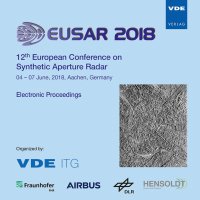The Interaction of Crude Oil on the Sea Surface with Ocean Fronts observed by SAR
Konferenz: EUSAR 2018 - 12th European Conference on Synthetic Aperture Radar
04.06.2018 - 07.06.2018 in Aachen, Germany
Tagungsband: EUSAR 2018
Seiten: 5Sprache: EnglischTyp: PDF
Persönliche VDE-Mitglieder erhalten auf diesen Artikel 10% Rabatt
Autoren:
Lehner, Susanne; Schwarz, Egbert (German Aerospace Center (DLR), Germany)
Soloviev, Alexander; Dean, Cayla; Kluge, John; Parks, Georgia (Nova Southeastern University, USA)
Perrie, William (Bedford Institute of Oceanography, Halifax, CA)
Inhalt:
Fine scale features on the sea surface associated with change in roughness are, e.g., Lee waves, wind rolls due to atmospheric rolls, wind shadows, swell waves and oceanographic effects due to upwelling, Langmuir cells, current fronts and wakes as well as natural and man-made slicks. Such features can be observed on synthetic aperture radar (SAR), because of the change in Bragg backscatter of the radar signal by damping of the resonant ocean capillary waves. Further this change in sea surface roughness can as well be observed in the sun glint area of optical imagery. Fine scale features like oceanographic fronts, turbulent currents, eddies and small slicks of natural origin or oil seepages are best observed on high resolution imagery, that is now freely available to the scientific community. Especially using new radar frequencies like the L- and C- band or the high resolution from X-band satellites as well as new modes of polarization, sea surface features have been analyzed in several campaigns, bringing very different datasets together thus allowing for new insight in small scale processes at a larger area.


